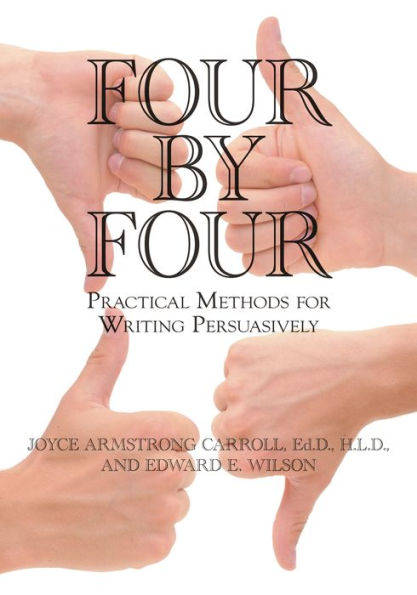Geared toward English and social studies teachers as well as school librarians, this book provides a clear and concise way to approach the teaching of persuasive writing—and to develop the skills students need to excel on high stakes tests as well.
In Four by Four: Practical Methods for Writing Persuasively, well-known authors and teachers of writing Joyce Armstrong Carroll and Edward E. Wilson provide a practical guide to teaching students how to write persuasively. Organized in four chapters, each containing four sections, the text opens with a history of rhetoric that serves as a logical preface to the persuasive writing basics, guides, and patterns presented in the remainder of the book.
It covers topics such as the Carroll/Wilson Inquiry Schemata as a data collection technique for persuasive writing, planning and organizing a persuasive paper, strategies for efficient editing, and writing the conclusion. Appropriate for educators who work with fourth-grade through college-level students in English and social studies, this guidebook spotlights the research process, a 21st-century skill that teachers should teach collaboratively with their school librarians.






